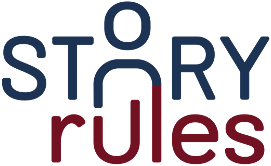The story and lessons underlying i2e1’s $3mn fund raise

The story and lessons underlying i2e1’s $3mn fund raise
#LeaderStories: A new series
This post marks the beginning of a new series for me: #LeaderStories – in-depth interviews with inspirational startup founders, investors and corporate professionals, who have shown tangible impact with their storytelling. The impact may have been a successful fund raise, winning a major customer account or even convincing a community – essentially a practical, real-life demonstration of the storytelling skills that we discuss on this blog.
To be fair, there are many factors underlying success, and effective storytelling is just one of them. In this blog however, we will focus on the storytelling aspect (duh), with just a peripheral view of the other factors.

For my first interview in the series, I’m thrilled to have Satyam Darmora, the affable co-founder and Catalyst (as he simply calls himself) of i2e1. i2e1 is an exciting startup with a mission to provide internet to everyone, using an innovative business model. I’ve known Satyam from my B-ABLE days (he was with MSDF then) and I hugely admired him – for his sharp questions, in-depth subject understanding and the unfailingly wise words of advice.
Satyam and his other co-founders started i2e1 in mid-2015 and it has come a long way since then. It has achieved great traction with customers and has also received strong investor validation. It recently raised $3m in Series A funding led by the Omidyar Network. I thought it would be really useful for all of us to learn from their success – especially the storytelling insights.
This in-depth hour-long conversation with Satyam is extremely insightful and filled with practical advice – on storytelling and other areas. I have learnt a lot from the interview, and I’m sure you will too.
Key storytelling insights
Our conversation was broadly divided into two parts: telling the i2e1 story to investors and to customers. This post is deals with the investor communication part; I’ll cover the customer piece in the next post.
For the interested folks, I would recommend going through the full interview transcript (shared as a separate post) for some great additional nuggets.
At a broad level, I have categorised the key storytelling insights under three heads: Knowing your purpose to find like-minded investors, crafting a compelling story and controlling the communication process.
Let’s get started (all quotes are Satyam’s from the interview).
I. Know your purpose and find like-minded investors
1. Communicate your idea’s origin story and the ‘Why’ behind the idea: Simon Sinek in his famous TED Talk (#3 among all time views) exhorts us to “Start with Why”. The right kind of investors, customers, employees and other partners are likely to join hands with you, if you clearly communicate your purpose, your ‘Why’. In Satyam’s case, the purpose was to solve for information inequality. Being from small towns, they had personally experienced it and strongly felt that other small town kids shouldn’t lose out on opportunities on this count. With this as the North Star, a lot of their story positioning decisions became easier.1
The presence of this North Star helps during the perilous, often-disorienting fund-raising journey. Based on investor advice, you’ll be tempted to modify your purpose, change your fundamental story, as Satyam confesses: “We also got into the trap of thinking what do investors want to hear.”
But they introspected and used their original purpose to come back on track “if I look at all the iterations our story went through, eventually we went back to why are we here…. why i2e1, which is ‘Information to Everyone’… , and we realised that as soon as we went back to the purpose, it started to resonate more with type of investors that we were looking at. And that has made us a stronger believer in the why of things.” (emphasis added)
The other related lesson here is one of authenticity in storytelling. There’s no point presenting an inauthentic version of yourself or your story to your investor. Dig deep, figure out what really drove you to start your company and communicate that from your heart.
2. Leverage your ‘Ethos’ in the initial funding phase: When pitching to investors you’re practising the art and science of persuasion. One of the most basic structures in understanding persuasion is Aristotle’s Ethos-Pathos-Logos framework. Logos refers to the data, logic and arguments underpinning your idea (in this case, statistics pertaining to information inequality and its effects). Pathos refers to the emotional content (the human stories, for instance the story of how information asymmetry hurt the co-founders personally). Ethos refers to the credibility, likeability and trust of the co-founding team itself. In any critical argument, ethos is the most important factor, followed by pathos and logos (contrary to the popular perception of relying on logic alone and wondering “why do they just not get it, it’s so obvious?!”).
For instance Satyam says “If I look at the initial investors and how funding happened, the underlying storytelling started even before i2e1 was founded. The people that I had worked with in the past, including previous bosses – the day I told them that I want to do it, even without listening to the idea, they said that ‘you know, we want to invest in it’”.
And that’s how ethos works – based on the reputation and trust you have built over time. Of course it would only work in your initial funding stages (the ‘Friends and Family’ round). But do make sure that your leverage your ethos by reaching out to as many of your past colleagues and friends as you can.
Can you influence your ethos in the short term? It’s difficult but you can work on it – will discuss in another post.
3. You choose the investors as much as they choose you: This may seem like a blasphemous statement to cash-hungry startups. If someone believes in your idea and is willing to fund it, should you even think twice? Just grab the money and run with it, right? Wrong, counsels Satyam.
“One has to do the exercise to meet as many people as you can and based on the feedback, start to understand where does your core message resonate better and what kind of funding do you want? For e.g., in our case, the model resonated a lot with one investor, but who said that “Everything is ok, but your vision is wrong. Your vision should be to become the best analytics company in the offline world.” We responded saying that while that is the approach we would use to achieve the vision, that is not the vision in itself. We didn’t want to lie to them just to get money.”
Turning down money – when you aren’t sure if you can meet salaries in a few months’ time – takes guts and integrity. But it pays off in the long run. “We thought it will make sense for us to work with investors where our perspectives are aligned in the longer term. So we ended up being funded by the Omidyar network which had the kind of vision and skills that we were looking for in an investor.”
II. Craft a compelling story
4. Appeal to the audience’s imagination…: Investors aren’t just looking for a profitable business, they are looking to build the next Unicorn. Unfortunately all you may have is an unmet need, a product with some technical specs and some (hopefully) promising early metrics. How do you connect what you have with what the investors want? Appeal to their imagination Satyam says. “You have to realise that the investment is happening not to make you profitable, but to make you a billion dollar enterprise. Therefore you have to hit on their imagination, probably not as much on the logic. You have to be a good storyteller, because eventually you aren’t dealing with machines or robots on the other side. You are dealing with a smart set of people, but the underlying word there is ‘people’.”
And how do you connect with their imagination? Analogies work great. “When you are building a model which is different from others, putting an analogy obviously helps. And probably that has to be the first slide. For example we used to describe i2e1 as the ‘Airbnb of the internet’. Because that tells you that we’re talking about sharing of internet at some level. It also created a punchy line…. Every time we could make the right analogies with businesses that the investors knew very well, the discussion was very productive.”
Analogies work because they compare your unknown (to the investor) idea with something the audience is familiar with (as we saw in this earlier blog post) and helps them imagine your growth potential. You need to invest a disproportionate amount of time to craft the right analogy for your business, because that’s what you’ll start your story with. And the first few minutes are most impactful as Satyam testifies: “The deal decision is made in that first few minutes. In that time, when they’re making a quick decision, are you able to portray the right analogy in front of them… in 90% of the cases it’ll influence the investor’s interest… In my experience, if the person was not interested in the first five minutes, anything we said later (with our logic, data etc.) wasn’t able to turn the tables. If we could get their imagination in the first five minutes, then the rest of the discussion made sense”
The other interesting nuance here is experimenting with different analogies. “You meet a different set of people and you see which analogy is aiding their imagination better. Because as an organisation, we are creating a product and there are certain facts around it… but the story can be told in 5 different ways. Which way does it impact most people makes a lot of difference. So for example, we tried ‘AirBnb of internet’ to ‘Spend Bureau of India’ (modeled on the Credit Bureau of India which tracks data on creditworthiness) and ‘Google Analytics of Offline World’. So, the description kept on changing…”
5. … However set the right expectations: There is a flipside to using powerful analogies though – you need to ensure they are relevant and set the right expectations about your business. (and refrain from using tired, overused analogies – the “Uber of X” model – as far as possible). “There’s no point in saying that I’m the ‘Uber of CRM’, when all I’m selling is just another ERP. It might be best ERP in world, but because I set a different expectation, the person would lose interest.”
6. You also need to ‘have’ the story: The greatest storyteller cannot flog a dead/non-existent story. To be able to tell a good story you must have (the semblance) of one. Having the story here means having the numbers – market size and growth, revenue, growth, margins, unit economics etc. You may have seen some startups get funding with hardly any numbers to speak of. But that’s no longer happening says Satyam. “There was a time when people would’ve gotten funding by choosing a ‘hot sector’ or selling a story of captive users – saying that India has 1.3Bn users, hence give me funding. Then those models started to fall down and the pendulum went to the other extreme. So since the last 1.5 years, questions around unit economics and revenue growth have been very specific. And people told us ‘Do not tell me about what the future potential is, tell me what is the revenue you are getting today’”. So bootstrap, conserve your funds and focus on growing your metrics. Having a good story is critical to be able to tell one.
7. Team is critical for initial stages: What do you do in the initial stages when you don’t have the numbers? Team can be a differentiator, argues Satyam. “When we described the model, our problem was more to convince investors that ‘this can be done’. What really helped us was that we had a strong team to back it, compared to competition (whichever way you defined it). For e.g. people thought of us as competing in the WiFi field – and we have the strongest team out there. And obviously, an important element investors look for is whether there is a team that can deliver it.”

III. Control the communication process
8. Always gun for face-to-face meetings to tell your story: Your startup is based in Pune/Calcutta/Chennai.. and the investors are in Mumbai, Delhi or Bangalore. There are a ton of cheap, convenient communication options – Skype, Whatsapp Video, a simple call itself. Should you even bother trying for a face-to-face meeting? Always, says Satyam. “I think in early stage, it’s a story which has to be told in front of someone. How do you put your passion, your hard work, your commitment in a PPT, we didn’t know. I think the flavour of the story doesn’t come out. We wouldn’t prefer Skype or a phone call, since if there were glitches, it would unnecessarily break your rhythm. Also, it’s a lot about the person sitting in the room – it gives you a better feel of the person on the other side. At times you may have a choice and you need to go with the right kind of investor.”
Even the teaser should be short and ensure you get a meeting, he feels. “So our strategy was to have a 2-3 line teaser email and request for a meeting time. Even in the Series A round, our preference was to meet people. Many investors are Bangalore and Mumbai. In our case we made sure that we’ll fly there and tell the story rather than make a phone call.”
9. Keep talking to investors: Most startups focus on building their business initially and start making the investor rounds only when its fund-raising time. Instead, you should start the conversation far earlier, states Satyam. “Strategically you should seek grounds for meeting people even when you are not trying to raise funds. You don’t have the anxiety that they won’t invest and they wouldn’t have an apprehension of refusing you. There’s a saying on the investing side ‘If you ask for money you get advice, if you ask for advice, you get money’. So, engaging with certain types of investors, understanding their interests and keeping them updated makes things easier, so that you get face-time with them … and when you get face-time make the most of the opportunity. Since inception, we were in touch with investors – talking to them, getting feedback,… not only with purpose of raising money, but also to gain insights and information.”
Summing up
With that, we conclude the investor communication portion of the interview. To summarise the key insights:
I. Know your purpose and find like-minded investors
1. Communicate your idea’s origin story and the ‘Why’ behind the idea
2. Leverage your Ethos in the initial fund-raising phase
3. You choose investors as much as they choose you
II. Craft a compelling story
4. Appeal to the audience’s imagination…
5. … However set the right expectations
6. You also need to ‘have’ the story
7. Team is critical for initial stages
III. Control the communication process
8. Always go for face-to-face meetings to tell your story
9. Keep talking to investors
I’m sure, as a startup founder (or even corporate professional) you’d have found some really useful advice to implement from the above. Please share in the comments if you have any additional tips/experiences of your own.
I’ll post the next article from the interview (on the customer storytelling part) soon. Meanwhile, do read through the entire interview transcript when you get the time – it’s a fascinating conversation.
*****
Hope you enjoyed this post.
Footnotes:
- You may need to do some introspection to figure out your idea’s origin story. In some cases it may have been a memorable moment or epiphany. This typically happens when you personally experience an unmet need (for e.g. the AirBnB founders couldn’t afford their rent in San Francisco and decided to let out their living room with an air mattress). In Satyam’s case, however, there wasn’t a particular moment of realisation, but a “thought undercurrent” that had been simmering for years. He remembers the moment it kind of precipitated though: when he completed 7 years at his previous employer (the famed 7-year itch). This is known as a ‘crystallisation of discontent’ moment, evocatively described by bestselling authors, Chip and Dan Heath, in their latest book, ‘The Power of Moments’. Keep a lookout for such moments in your life.







